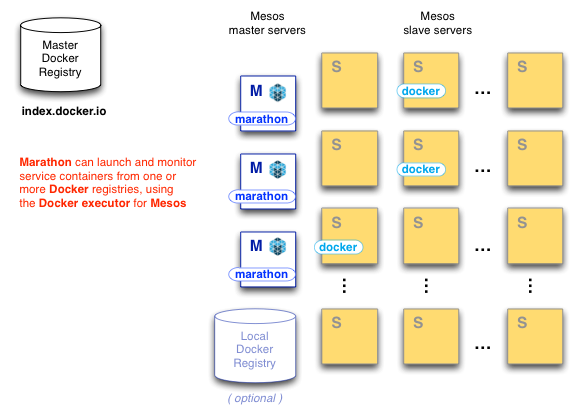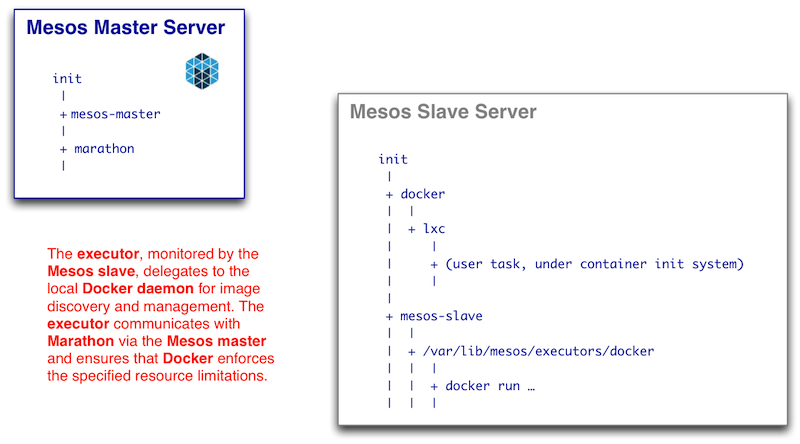Docker containers provide a consistent, compact and flexible means of packaging application builds. Delivering applications with Docker on Mesos promises a truly elastic, efficient and consistent platform for delivering a range of applications on premises or in the cloud. This repository combines Docker with the Mesos cluster scheduler and Marathon but could also be used with other Mesos frameworks such as Chronos.
This tutorial shows you how you can get started with Mesos / Docker.
If you have questions, please post on the Marathon Framework Group email list.
You can find Mesos support in the #mesos channel on freenode (IRC).
The team at Mesosphere is also happy to answer any questions.
- Mesos 0.14+ (while 0.14 isn't released yet, Mesosphere provides packages of the release candidates).
A Mesos cluster comprises a few masters and many slaves. As work is farmed out to them, Mesos slaves delegate to executors for the setup and teardown of individual tasks. It is the executor that manages communication between the slave and the Docker daemon. The Docker daemon manages caching and launch of Docker images, which can be pulled from the global Docker index or a local registry.
When a Docker container is started as a Mesos task, it runs beneath the Docker
daemon on a slave server. Although the Docker container does not run as a true
child process of the executor, as it would have under the old Docker
standalone mode, the executor is able to manage translation of resource
limits, signals and Mesos process control messages to appropriate calls of the
docker tool. Fine-grained resource monitoring, forthcoming in mainline Mesos
and part of some service management tools, is hard to do right if the
container does not run directly under the executor -- so this architecture may
be revised in the future.
When a user requests a Docker container with Marathon, using the web UI or the HTTP API as in the examples above, the request is ultimately delegated to the LXC tools, by way of Mesos and Docker.
-
Marathon makes a resource request from the Mesos master and then waits to accept an appropriate offer.
-
Once an offer is accepted, the Mesos master sends the task's specification to the slave.
-
On the slave server, the Mesos slave daemon calls the Mesos-Docker executor which in turn calls the
dockercommand line tool. -
The
dockercommand line tool talks to the local Docker daemon, which manages interactions with the cache of images and the LXC tools. -
If the image is cached, it will be run from the cache. Otherwise, the Docker daemon contacts a Docker registry to retrieve it.
-
The Docker daemon runs the container under the LXC tools.

